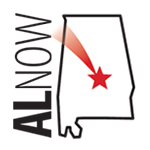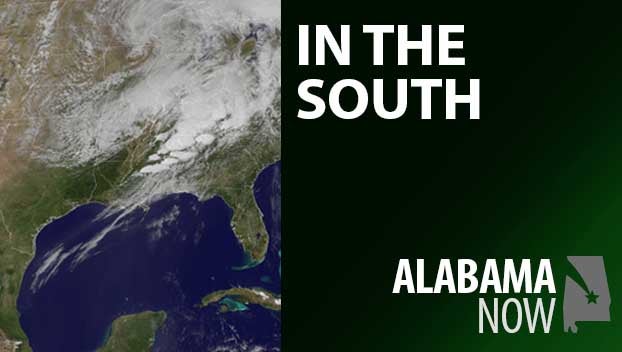Household bills take 42% bite out of U. S. income; Alabama ranks second lowest in auto insurance cost
Published 6:45 am Wednesday, February 22, 2023
doxo, the innovative web and mobile bill pay service, today released its 2023 U.S Bill Pay Market Size & Category Breakout Report, revealing that of the $3.87 trillion that Americans spend annually on household bills, $3.22 trillion falls within ten essential bill payment categories, comprising nearly three quarters of all U.S. consumer spending1. The report found that the average U.S. household spends $29,459 per year, or 42% of income on all household bills, and also breaks out the household spending market size for each of the ten essential bill categories, percentage of households that pay each bill, and average monthly and annual bill pay costs by state.
doxo’s proprietary and comprehensive dataset — based on actual bill payments across 97% of U.S. zip codes and 45 bill pay service categories, enables precision much greater than typical survey-based estimates of market size and consumer spend. The doxo Household Bill Pay dataset provides resolution at the national, state, county and city levels, enabling the deepest and most complete picture of the essential financial obligations of US Households.
“With record-breaking inflation rates, continued concerns of a recession, and nearly two-thirds of working Americans living paycheck to paycheck, economic transparency has never been more critical,” said Liz Powell, Senior Director of INSIGHTS at doxo. “doxo’s 2023 U.S. Bill Pay Market Size and Category Breakout Report leverages our proprietary dataset to help make the U.S. Bill Pay Economy transparent and understandable for consumers, service providers, analysts, and policy makers. Alongside our app that simplifies the task of staying on top of bills to help improve financial health, these reports support doxo’s ongoing mission to empower our consumer users, billers, and financial institutions alike to make better decisions.”
doxo’s proprietary dataset of consumer bill pay activity generates the industry’s most accurate category and regional statistics:
- doxo’s bill pay service enables all-in-one bill pay to more than 120,000 providers across the country in 45 different service categories. By incorporating tens of millions of bill payments across 97% of U.S. zip codes and all U.S. income and regional demographic segments, the 2023 U.S Bill Pay Market Size & Category Breakout Report directly represents what Americans actually pay on their bills.
- Updated to represent 2023 consumer spending, and in light of recent findings that 64% of Americans are living paycheck to paycheck and 50% are worse off than last year, this proprietary dataset provides the foundation for doxo’s bottom-up market sizing of the 10 most common bills and makes category size and average spend transparent at the national, state, county and city levels. In contrast to other industry data sources – which often mix household recurring bill expenses with employer-paid or withheld expenditures (e.g. health insurance and taxes), and retail and discretionary spending (i.e. credit card balances) – doxo’s unique, nation-wide household bill pay data specifically quantifies the actual consumer portion of total recurring bill spend and household penetration rate for each category.
Key Findings from the 2023 U.S Bill Pay Market Size & Category Breakout Report include:
- Total Market Size: $3.87 trillion across all categories; of which $3.22 trillion spent per year on the 10 most essential household bills (broken out specifically in the doxo report)
- Average Yearly Cost: $29,459 spent per year on all household bills; $24,557 spent per year on the ten most essential household bills
- Percent of Annual Income: All household bills amount to 42% of consumers’ income per year; the ten most essential household bills amount to 35% of consumers’ income per year
- The report findings also include breakouts by service category, household market penetration for each type of service, and household average spend per month by state.
$3.87 trillion total household bill pay spend; of which $3.22 trillion is spent across these 10 essential categories:
- $832B Mortgage
- $619B Rent
- $544B Auto Loan
- $436B Utilities
- $267B Auto Insurance
- $175B Mobile Phone
- $152B Cable & Internet
- $142B Health Insurance (consumer-direct portion)
- $36B Life Insurance
- $19B Alarm & Security
The average U.S. household spends $24,557 per year on the ten most essential bills.
According to The U.S. Census Bureau, the real median household income in the U.S. is $70,7842. This number, combined with doxo’s estimate that the average U.S. household spends $24,557 per year on the ten most essential bills, suggests that more than one third of Americans’ yearly salary is put toward core expenses – a sizable portion of income by any measure.
While housing continues to be the highest U.S. household expense by a longshot, the report reveals that the average household is paying more out-of-pocket per month for auto loans, auto insurance, and even mobile phone bills than essential costs like health or life insurance, which are frequently covered by their employer or automatically deducted from paychecks. The average monthly amount of each bill paid in each category is:
- $1,321 Mortgage
- $1,191 Rent
- $467 Auto Loan
- $351 Utilities
- $207 Auto Insurance
- $120 Health Insurance (consumer-direct portion)
- $119 Mobile Phone
- $118 Cable & Internet
- $89 Life Insurance
- $84 Alarm & Security
Note that the market size of each category, and the total spend per household per year, factor in not only in the average amount of each bill payment, but also the actual percentage of households paying each category. For example, consumers that pay rent are not typically also paying a mortgage. See full report for these category details.
Actual Bill Pay Spending Ranked by State
- Mortgage payments are highest in California, New Jersey, Hawaii, Massachusetts, and New York, respectively. The same five states also top the list for rent costs. West Virginia has the distinction of being the most affordable state for both mortgage ($879 on average per month) and rent ($785 on average per month) costs.
- Auto Loan payments are highest in Wyoming and North Dakota (both $545/month). Pennsylvania ($400/month) and Ohio ($403/month) residents enjoy some of the lowest.
- Auto Insurance bills are the highest in Hawaii ($261/month) and Alaska ($260/month), while Vermont ($148/month) and Alabama ($174/month) pay the lowest monthly average.
- Utilities expenses (defined in the doxo report as electric, gas, water & sewer, and waste & recycling) are highest in Hawaii ($633/month) and Maine ($500/month), while Mississippi ($255/month) and South Dakota ($278/month) are the most affordable.
- Cable & Internet bills make the biggest dents in the pockets of residents in New Hampshire ($151/month) and Vermont ($134/month), and the smallest dents in the residents of South Dakota ($95/month) and Nebraska ($97/month).
- Mobile Phone bills are most expensive in Hawaii ($165/month), more than double the lowest state in the Union, North Dakota ($75/month).
- Health Insurance expenses, when considering consumer out-of-pocket spending only (excluding employer payments), are highest in Hawaii ($223/month) and Vermont ($194/month) and lowest in Alaska ($67/month).
- Life Insurance spending is highest in Rhode Island ($140/month) and Montana ($134/month) and lowest in West Virginia ($61/month) and Alaska ($67/month).
- Alarm & Security bills are most expensive in Delaware ($118/month) and Oregon ($110/month) and residents in Vermont ($50/month) and New Hampshire ($65/month) pay the least for protection.
In addition to the direct cost of household bills, consumers also contend with additional hidden costs of bill pay, which totals an average of $986 per year per U.S. household (up from $925 on average the year prior) per household. The Hidden Costs of Bill Pay report from doxo exposed the hidden bill pay costs – obscured in identity fraud, late fees, overdraft fees, and detrimental credit impacts – which amount to an additional $128 billion annually in consumer spending.
For more information, or to view the entire report, visit www.doxo.com/insights/.





